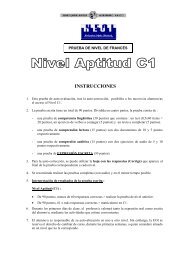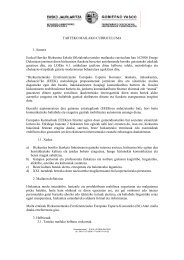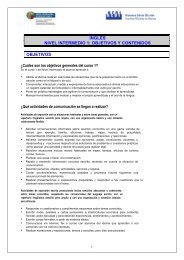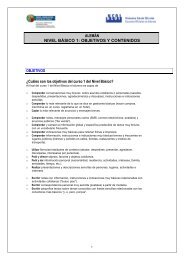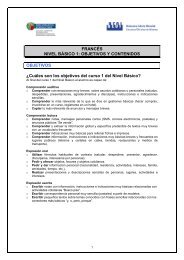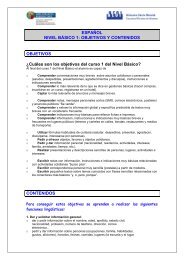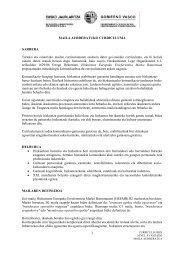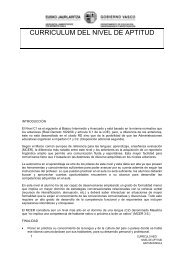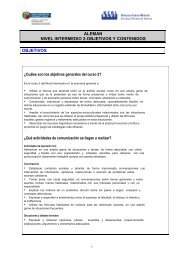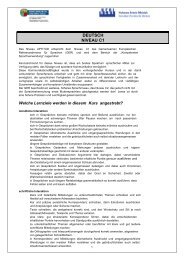C1 – Course Syllabus - Escuelas Oficiales de Idiomas del País Vasco
C1 – Course Syllabus - Escuelas Oficiales de Idiomas del País Vasco
C1 – Course Syllabus - Escuelas Oficiales de Idiomas del País Vasco
Create successful ePaper yourself
Turn your PDF publications into a flip-book with our unique Google optimized e-Paper software.
Learners who need a comprehensive reference of inventories and examples of the range of<br />
grammatical features contemplated at this level, (e.g. functional, lexical, syntactical, and<br />
phonological features etc.) should consult the recommen<strong>de</strong>d bibliography on grammar at the<br />
end of this syllabus.<br />
Characteristic grammatical structures at this level will inclu<strong>de</strong> the following:<br />
Noun structures<br />
Uncount nouns used as count nouns<br />
Mostly food and drink items, e.g. curry / a curry, wine / two wines, coffee / a coffee but also<br />
<strong>de</strong>ath / a <strong>de</strong>ath in the family, joy / a joy to see, etc.<br />
Uncount nouns ending in „s‟<br />
These are most commonly associated with certain activities and subjects of study, games<br />
and medical conditions, e.g. mechanics and mathematics, billiards and cards, diabetes and<br />
measles, etc.<br />
Plural nouns<br />
a) plural forms<br />
Apart from the more common irregular forms like man / men, etc. others (with no singular<br />
form) inclu<strong>de</strong>, e.g. vermin, police, poultry, etc.<br />
b) always ending in „s‟<br />
While many of these words may have a singular form, the form ending in „s‟ will have a<br />
different meaning and context, e.g. brains and grounds, services and matters, overalls<br />
and binoculars, etc.<br />
Some of these examples are more commonly used with <strong>de</strong>terminers, for example those<br />
commonly used with „the‟, e.g. proceeds, authorities, premises, etc.<br />
Compound nouns<br />
a) Most compounds are one or two-word, unhyphenated forms which can be count and<br />
uncount nouns.<br />
- Count compounds like headache or home help.<br />
- Uncount compounds like makeup or common sense.<br />
b) Hyphenated forms<br />
Some two-word compounds, mostly <strong>de</strong>rived from phrasal verbs and the majority of threeor-more<br />
word compounds are hyphenated, e.g. passer-by, T-shirt, set-up, sit-in, etc. /<br />
father-in-law, one-night stand, three-piece suite, do-it-yourself, etc.<br />
c) Plural compounds<br />
In two-or-more word count compound nouns the plural inflection is ad<strong>de</strong>d to the<br />
headword in the group, e.g. passers-by and runners-up, fathers-in-law and one-parent<br />
families.<br />
Quantifiers and Partitives<br />
The less common quantifiers like: loads of, heaps of, the remain<strong>de</strong>r of, zillions of, etc.<br />
The more common partitives used with count and uncount nouns, e.g. a drop of, a grain of, a<br />
scrap of, etc.<br />
And those referring to groups, e.g. a team of, a flock of, a bunch of, etc.<br />
17



